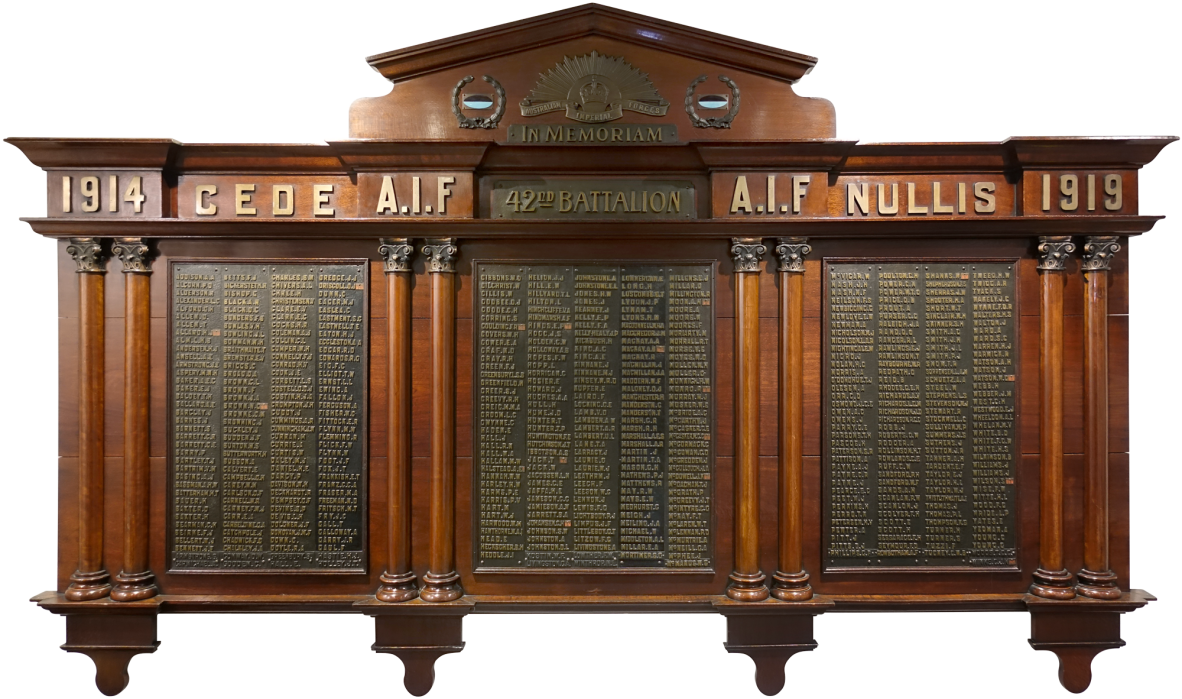Stories behind the name: Arthur Pattison 42nd Infantry Battalion
By Alice Rawkins, Visitor Services Assistant, Anzac Square Memorial Galleries | 4 November 2020
Arthur Pattison, from Rockhampton, enlisted with the Australian Imperial Forces on 20 December 1915. He was the son of John and Jane Pattison, from Mount Morgan, and had been educated at the Boys State School, Queensland. His enlistment papers provide valuable insights into his life prior to enlistment; he was 20 years old, single, a member of the Church of England and worked as a driller.
A Pattison 42nd, one of the soldiers photographed in The Queenslander Pictorial supplement to The Queenslander, 1916. State Library of Queensland. Image number: 702692-160805-s0023-0052.
Following his enlistment, Arthur undertook training in Brisbane and was assigned to the 42nd Battalion, D Company. On 5 June 1916, he and his battalion embarked overseas on the HMAT Borda from Sydney and arrived in Southampton on 23 July 1916. The 42nd then underwent a period of training at Larkhill, a garrison town in the civil parish of Durrington, Wiltshire. While stationed here, Arthur was charged with being absent without leave (AWL) from midnight 13 November to 17 November. This offence was not uncommon among Australian soldiers, with the AIF recording the highest rate of soldiers charged with being AWL of any national contingents in the British Expeditionary Force during WWI. For his offence, Arthur forfeited four days’ pay.
The 42nd Battalion was transferred to France on 26 November 1916, and entered the frontline for the first time on 23 December. The winter of 1916-1917 was brutal, and the 42nd spent much of it on the frontline. The unhygienic and cramped nature of trench warfare created the perfect environment for diseases and illnesses to flourish. Soldiers’ health also deteriorated due to poor diet, lack of sleep, stress, exposure to the cold, and contact with mice, lice, rats, fleas and other parasites. On 21 January 1917, Arthur was admitted to hospital with diarrhoea. This was a common illness among troops, with 366 Australian service personnel dying from gastro-intestinal infections during the First World War. After receiving treatment, Arthur re-joined his unit on 23 January 1917. In the following year he would also suffer from a septic throat, ulcerated tonsils and ICT throat (inflamed connective tissue). Illness and disease became a common experience for soldiers during WWI, with nearly 438,000 non-battle casualties in the AIF.
Arthur was promoted to Lance Corporal in September 1917. The following month, during the Battle of Broodseinde Ridge, he received a bullet wound to the leg. He was one of 6,500 Australian casualties during this action. Arthur re-joined his battalion on 20 October following treatment. For the next five months Arthur and his battalion rotated between service in the rear areas and the frontline.
In March 1918, the 42nd Battalion was rushed from Belgium to the south of France to assist with the German Spring Offensive. They played a pivotal role in blunting the drive towards the vital railway junction of Amiens. In July, the battalion participated in the Battle of Hamel, capturing all their targets with only three fatal casualties. The battalion’s next major action was during the Battle of Amiens (8-12 August), also known as the Third Battle of Picardy. This marked the opening phase of the Allied offensive. It was during this battle that Arthur Pattison was killed in action. His service records provide few details about the event, recording only the date and place of his death.

42nd Infantry Battalion Honour Board, World War One Crypt, Anzac Square, Brisbane
Arthur Pattison’s name is recorded on the 42nd Infantry Battalion Honour Board at Anzac Square. This memorial acknowledges the supreme sacrifice made by 469 Queenslanders who served in the 42nd Battalion. The Anzac Square team have linked around 170 soldier portraits and images to names listed on this memorial, which can be viewed here. If you are interested in learning more about the 42nd Battalion and the amazing individuals who served in this unit, why not plan a visit to the Anzac Square Memorial Galleries? Come and commemorate Remembrance Day 2020 by learning the stories of those who fought to protect the rights, interests and freedom we value in Australia.
Additional Resources:
- Arthur Pattison Service Papers
- Anzac Square Memorial Galleries Website
More information
One Search - http://onesearch.slq.qld.gov.au
Comments
Your email address will not be published.
We welcome relevant, respectful comments.